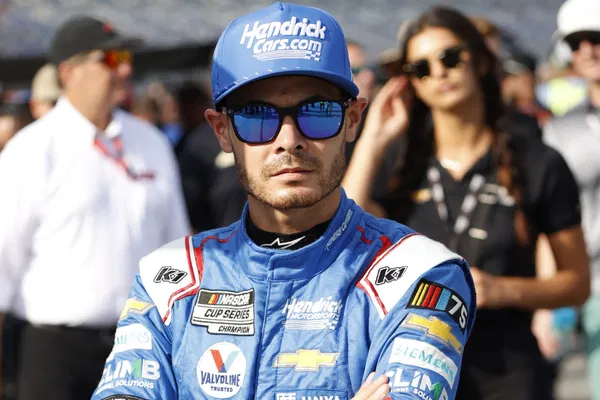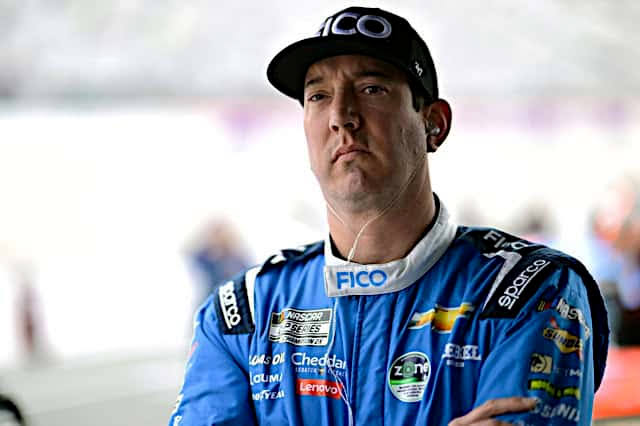Since its debut in 2022, the Next-Gen car has sparked a divide within the NASCAR community. While many have praised its performance on intermediate tracks and superspeedways, others feel it falls short, particularly on short tracks and road courses. The enhanced safety features of the Generation 7 car are undeniable, yet one has to wonder if this improvement has come at the cost of excitement in races at venues like Bristol Motor Speedway, Martinsville Speedway, and Darlington Raceway.
Cliff Daniels, crew chief for Kyle Larson, believes there are numerous advantages to the Next-Gen car, making it a viable long-term option for NASCAR. He acknowledges that the organization must address certain issues but remains confident in the car’s potential. Daniels engaged with fans on social media, patiently responding to their questions and concerns regarding the Next-Gen car’s performance.
The partnership between Cliff Daniels and Kyle Larson has proven successful, with the duo winning a total of 21 races, including 12 poles throughout their careers. This season alone, they have secured five victories, the most recent being at Bristol Motor Speedway, where Larson led an impressive 462 of 500 laps during the 2024 Bass Pro Shops Night Race. This feat marked the highest number of laps led at Bristol in 47 years. Fans have come to respect Daniels, considering him among the top crew chiefs in the Cup Series, alongside notable names like Chris Gabehart and Rodney Childers.
As the opening Round of 12 playoff race approached, a fan suggested that Cup Series drivers should compete in Xfinity Series cars to enhance the competition’s quality. Daniels responded thoughtfully, asserting that the Next-Gen platform is here to stay and has produced some of the best intermediate and superspeedway races in recent history, as well as several decent road course races. However, he acknowledged that short track races need improvement, emphasizing a collective understanding among fans and competitors alike. He encouraged fans to keep watching and supporting NASCAR, assuring them that upcoming races, including one at Kansas, would be exciting.
Despite his support for the Next-Gen car, Daniels did not shy away from addressing a significant drawback. He explained that while the old car and current Xfinity cars allow the trailing vehicle to affect the leading car through aerodynamic adjustments, the Next-Gen car does not facilitate this dynamic. He elaborated that in the new car, the trailing vehicle struggles to gain momentum and “move that guy” at the front. He noted that while factors like tire performance and horsepower play a role, the Next-Gen car has lost a crucial element of competitive racing.
Daniels also expressed support for increasing horsepower in the Next-Gen cars, which many believe could improve tire wear and make races more thrilling, especially on short tracks where overtaking is often challenging. While the Xfinity Series cars do not suffer from the same problems, there is a growing need for solutions in the Cup Series before dissatisfaction among fans escalates.
Despite these ongoing challenges, races at intermediate tracks and superspeedways have seen a marked improvement in excitement compared to the Gen-6 era. Daniels remains hopeful that solutions will emerge, although he cautioned against merely applying Xfinity setups to Cup races due to the potential long-term consequences for the sport.
Expectations were notably high as the final Round of 16 playoff race approached at Bristol Motor Speedway. Fans anticipated a thrilling short track showdown, especially following an entertaining spring race earlier in the year, where drivers faced significant tire degradation. Unfortunately, when Goodyear opted to use the same tire compound for the 2024 Bass Pro Shops Night Race, the outcome was less thrilling. Larson’s domination prompted many fans to label the race as boring.
In contrast, Daniels shared a different perspective when speaking with SiriusXM NASCAR Radio. He argued that while the earlier Bristol race had its moments of excitement due to tire failures, that chaos was not a reliable means of engaging fans. He explained, “The Bristol race, everyone wants to say was so amazing in the spring because of the tire coming apart. Well, no, it was the tire coming apart that created chaos. It wasn’t a good race. The chaos was fun for the moment. But that’s not sustainable like that. That type of chaos is not what our sport needs on a weekly basis. We need good, pure racing.”
Kyle Larson echoed this sentiment, stating that Bristol has historically not been known for easy overtaking. He characterized the spring race at Bristol as an outlier rather than a standard, advising fans not to blame Goodyear for the lack of tire wear during the recent race. He urged supporters to “temper their expectations,” reminding them that they are watching spec race cars. Larson’s victory at Bristol not only reinforced his position at the top of the driver standings but also gave him a 15-point lead over Christopher Bell as they head into the Kansas Speedway race.
Kyle Larson’s Crew Chief Urges Fans to Keep Faith in Next-Gen NASCAR Amid Major Concerns




